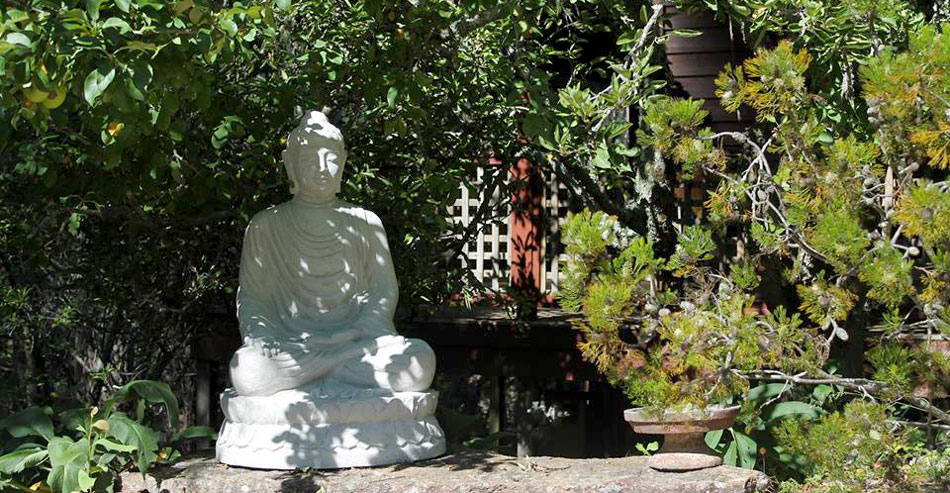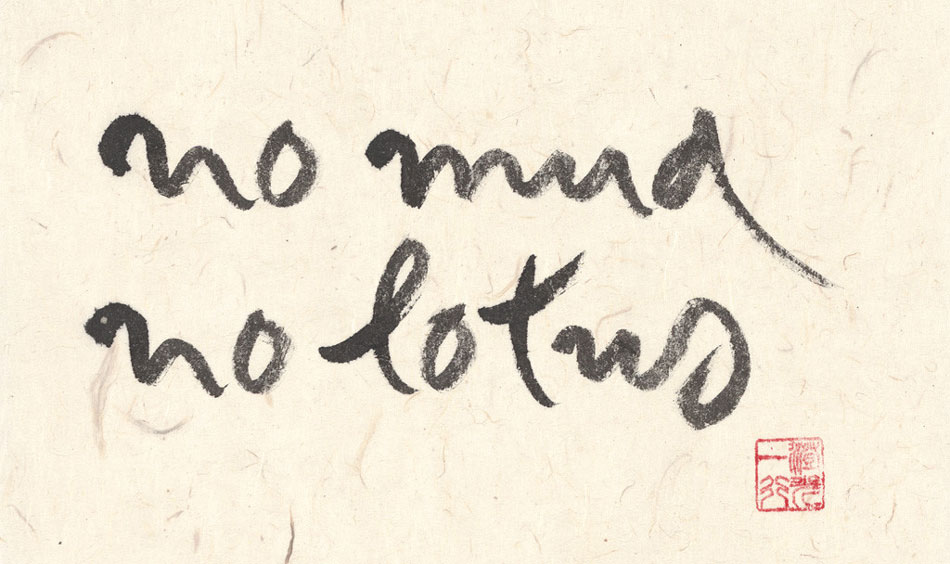5 Things I Learned on Silent Retreat
Last weekend I attended my first silent meditation retreat, held at the Blue Mountains Insight Meditation Centre. From Saturday morning until Monday lunchtime we kept ‘noble silence’ - meaning no interaction or communication with the other yogis, no mobile phones, no talking except asking the teacher an occasional question. Our day began at 6am with meditation, gentle stretching and a quiet breakfast. As the day progressed seated meditation was alternated with periods of walking meditation - around the hall, in the soft grass outside, or along dedicated walking tracks of sand and stone.

Between sessions we were encouraged to practice continuous mindful awareness. Meals were eaten in silence, allowing every delicious mouthful to be savoured and enjoyed. Each day I took a cup of tea outside after lunch and dinner to sit beneath the trees that were just starting to take on their autumn colours. By the time we went to bed each night we were exhausted from a full day of concentration, mindfulness and learning. I slept deeply, with vivid dreams and heavy bones, for at least a good eight hours each night.
All in all, it was a wonderful experience. I felt a little spaced out on the train heading back into Sydney, but it was a warm and pleasant spaced out feeling. All sensations were heightened - colours looked a little brighter, sounds crisper, as if the vibrancy had been turned up on the world.
I would highly recommend retreating to anyone who meditates regularly and wants to immerse themselves in continuous practice. Three nights was ideal for my first retreat - it was tough, but manageable, enjoyable yet still a challenging to be still, silent and aware for that long.
Here are 5 things in particular that I want to share with you about the experience:
1. Silence can be soothing
I was really nervous about the silent aspect of the whole retreat experience. There are terrible stories of people losing their grip on reality after extended periods of silence, of feeling themselves go quietly mad. This idea terrified me, and if I’m honest, it was the main thing that held me back from signing up for a retreat until now.
Of course, there are plenty more stories from people who have thoroughly enjoyed the experience, but anxious minds don’t tend to focus on the positives when fear is involved!
One week on, I can honestly say that the peace and quiet of noble silence was one of the highlights of the whole weekend. It was incredibly soothing, calming and allowed my meditation to deepen in a way that I hadn’t realised could be possible before. Especially when the silence was combined with continuous practice - trying to remain mindful, aware, present during normal activities like eating, washing, dressing in the morning.
2. There is such power in continuous mindfulness
As mentioned above, meditating all day for days in a row builds a profound concentration, a state of awareness that is hard to put into words. In his book ‘The Experience of Insight’, Joseph Goldstein puts it like this:
“There is a certain point in the practice when the momentum of mindfulness is so strong that it starts working by itself, and we begin to do things with an ease and simplicity and naturalness which is born out of this effortless awareness.”
By the third morning meditation felt easier, more natural and there was a greater ability to settle the attention on the breath. It felt wonderful to be aware of the body moving as I walked around the property, and out on a silent bush walk with the group. Maintaining focus off the meditation cushion helped me see how this practice can enhance regular life, bringing a clarity and vibrancy to the realities of everyday.
3. Walking meditation is a beautiful way to practice
Periods of seated vipassana meditation were alternated with walking meditation sessions. The pace could be fast, or slow, or really really slow - depending on how busy or settled the mind felt at that time. I found this practice soothing, settling and a beautifully organic way to bring myself fully into the present moment. Over the coming weeks I will write more about how to practice walking meditation, but you might start with these simple instructions from Thich Nhat Hanh.
4. Be generous with yourself
This was the suggestion from the teacher Michael Dash on the first night of retreat - be generous, be kind, take it slowly and patiently. Valuable advice, as there were moments when meditation was incredibly frustrating or my back hurt, and it was this idea that allowed me to soften. Sometimes the best way to honor the present moment is to give yourself some space and time to relax, to simply sit or lie on the grass in the sunshine for a while. Taking it easy when you need to, generously allowing your body and mind the rest you need allows you to focus without distraction more easily later. I suppose this is an insight for life in general!
5. We can learn from our suffering

This calligraphy by Thich Nhat Hanh was framed and hanging in the dining room at the centre. Over the four days I looked at it while making tea, the truth of its simple observation became clearer. Insight comes from learning to be with suffering, not from avoiding it, pushing it away or trying to escape.
Any moments of insight I had during the retreat came from allowing suffering to be present, simply knowing that anxiety or upset was there without resisting it. Acknowledging all that was present rather than fighting or avoiding unpleasant thoughts and sensations allowed me to understand some of the processes that lead to discomfort.
The fruits of practice often spring from the murkiest parts of ourselves - the desire to improve, the feeling that we aren’t enough, the need for approval. When we can see the desire to be anywhere other than where we are right now, and offer that part of ourself kindness and compassion, we can create space for a new perspective to emerge.
“We have a choice. We can spend our whole life suffering because we can’t relax with how things really are, or we can relax and embrace the open-endedness of the human situation, which is fresh, unfixated, unbiased.”
~Pema Chodron
The lessons I learned on retreat will continue to unfold for me over the coming weeks and months. My morning meditation already feels different, and I have started to incorporate gentle walking meditation into my routine too. The delicious food, comfortable accomodation and supportive environment of the BMIMC helped me relax and participate fully in the process of deepening mindful awareness. I can see the value in retreating now, the value in continuous silent practice to immerse the brain in the training required to make changes. If you have any desire to try this for yourself, I recommend finding somewhere you can go for just a few days to begin with, somewhere that will feel comfortable and supportive to allow you to give yourself over to the experience and practice with dedication.
If you have any questions, or want to share your own memories of retreat, head to Facebook or Twitter. I have also edited the preparation post published last week to include a couple of other essentials I will be taking with me next time. One last thing I do know for sure, there will definitely be a next time.
Published